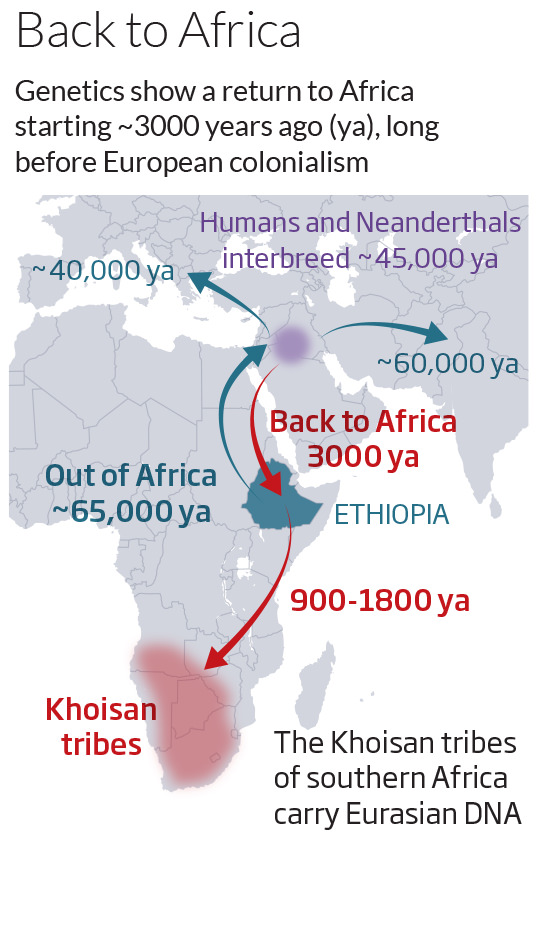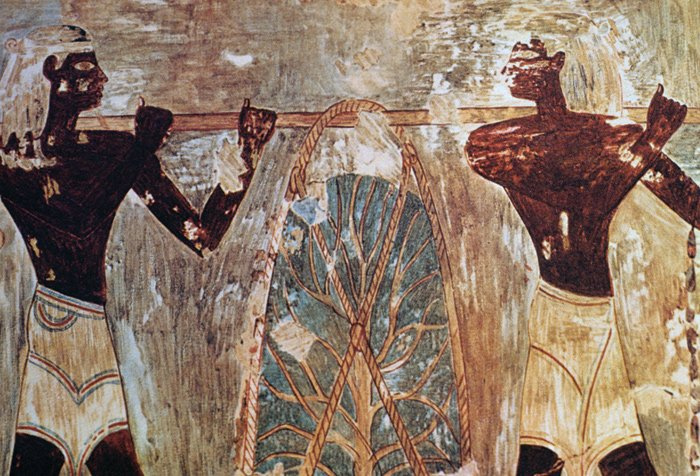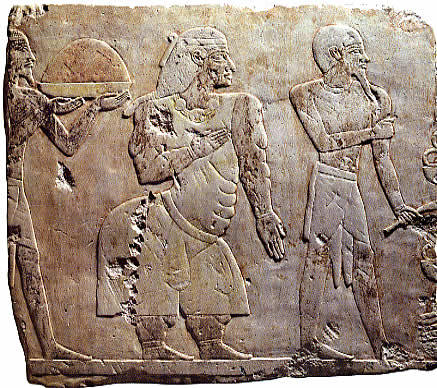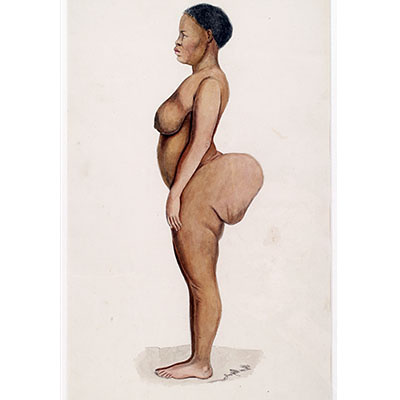http://www.pnas.org/content/105/31/10693.full
"E3b1-M35*(former) was found at relatively high frequencies in southern African click-speaking populations (31% and 11% in the Kxoe and !Kung, respectively) (8). All of these individuals now exhibit the M293 mutation (present study). With the exception of one haplotype found in the Kxoe sample, the southern African M293+ Y-chromosomes all carry the derived M293(DYS389I-10) allele (Fig. 1). Three Sandawe and two Kxoe share an identical M293(DYS389I-10) Y-STR haplotype. Most !Kung individuals have Y-chromosomes that appear to derive from this central haplotype (see Fig. 1). One !Kung individual shares a Y-STR haplotype with Hadza and Datog individuals. These Tanzanian and Khoe-San individuals with identical Y-STR haplotypes across 10 loci are likely to have very recent common ancestry. Using analytical methods developed in Walsh (26), we can estimate the time to the most recent common ancestor (TMRCA) of two individuals who share identical haplotypes across 10 loci. Assuming an infinite alleles model and an average Y-STR mutation rate from Zhivotovsky et al. (18), the mean TMRCA is 1,800y (95% credible region 40–6,680 y). Assuming a binary stepwise STR model, the mean TMRCA of two identical 10 locus haplotypes is 2,065 y. The median estimate under a binary stepwise model is 1,200 y (95% credible region 40–5,070 y). The mean and median estimates are somewhat different due to the exponential shape of the TMRCA curve"
"Our Y-chromosomal evidence supports a demic diffusion model of pastoralism from eastern to southern Africa ≈2,000 years ago."
You can see from the maps that the E3b1- M293 mutation once covered all of Somalia. The Khoe (part of the Khoisan) arrived in southern Africa, with sheep and goats and some cattle, about 2000 years ago. The San had arrived in southern Africa (not South Africa) about 4000 years earlier. The nexus for this group was once in Tanzania, but it extended through the drier areas all the way to the Red Sea. They were the dominant human race for roughly 200,000 years.The Bantu expansion, arriving in South Africa AD 300-500, drove them further south and to the drier margins. Today they number only about 100,000.
The Hadza and Sandawe of Tanzania and the Eyle of Somalia are relict "bushman" populations, neither Khoi nor San, that got left behind when the pastoralist Khoe moved south. All of these groups are still known for the hunter/gatherer aspects of their culture.
Where do you suppose the Khoe (Also spelled Khoikhoi ) got their animals and pastoralist culture? Why do you suppose they were moving south when they got hit with the Bantu Expansion?
"E3b1-M35*(former) was found at relatively high frequencies in southern African click-speaking populations (31% and 11% in the Kxoe and !Kung, respectively) (8). All of these individuals now exhibit the M293 mutation (present study). With the exception of one haplotype found in the Kxoe sample, the southern African M293+ Y-chromosomes all carry the derived M293(DYS389I-10) allele (Fig. 1). Three Sandawe and two Kxoe share an identical M293(DYS389I-10) Y-STR haplotype. Most !Kung individuals have Y-chromosomes that appear to derive from this central haplotype (see Fig. 1). One !Kung individual shares a Y-STR haplotype with Hadza and Datog individuals. These Tanzanian and Khoe-San individuals with identical Y-STR haplotypes across 10 loci are likely to have very recent common ancestry. Using analytical methods developed in Walsh (26), we can estimate the time to the most recent common ancestor (TMRCA) of two individuals who share identical haplotypes across 10 loci. Assuming an infinite alleles model and an average Y-STR mutation rate from Zhivotovsky et al. (18), the mean TMRCA is 1,800y (95% credible region 40–6,680 y). Assuming a binary stepwise STR model, the mean TMRCA of two identical 10 locus haplotypes is 2,065 y. The median estimate under a binary stepwise model is 1,200 y (95% credible region 40–5,070 y). The mean and median estimates are somewhat different due to the exponential shape of the TMRCA curve"
"Our Y-chromosomal evidence supports a demic diffusion model of pastoralism from eastern to southern Africa ≈2,000 years ago."
You can see from the maps that the E3b1- M293 mutation once covered all of Somalia. The Khoe (part of the Khoisan) arrived in southern Africa, with sheep and goats and some cattle, about 2000 years ago. The San had arrived in southern Africa (not South Africa) about 4000 years earlier. The nexus for this group was once in Tanzania, but it extended through the drier areas all the way to the Red Sea. They were the dominant human race for roughly 200,000 years.The Bantu expansion, arriving in South Africa AD 300-500, drove them further south and to the drier margins. Today they number only about 100,000.
The Hadza and Sandawe of Tanzania and the Eyle of Somalia are relict "bushman" populations, neither Khoi nor San, that got left behind when the pastoralist Khoe moved south. All of these groups are still known for the hunter/gatherer aspects of their culture.
Where do you suppose the Khoe (Also spelled Khoikhoi ) got their animals and pastoralist culture? Why do you suppose they were moving south when they got hit with the Bantu Expansion?




